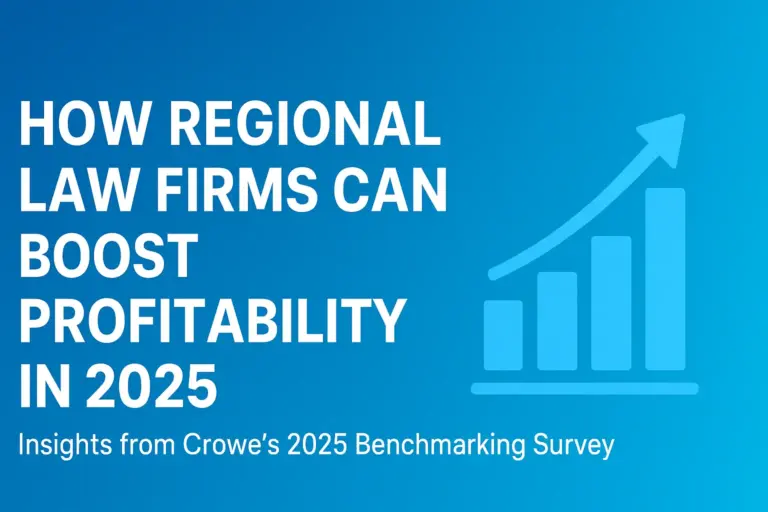How much is your firm leaving on the table by treating marketing as an expense rather than an investment in sustainable growth?
In the fast‑moving legal sector, standing still means falling behind. Effective marketing isn’t just a nice‑to‑have—it underpins every successful law firm in the UK, helping you win new clients, reinforce your brand and demonstrate value to stakeholders. Whether you’re a small high‑street law firm, a niche legal practice or a multidisciplinary professional services provider, this guide to marketing offers a deep dive into strategies that drive results and the metrics you need to track.
By the end, you’ll have:
- A clear framework for evaluating digital marketing efforts—from social media to SEO and PPC
- Practical guidance on crafting content that resonates with potential clients in specific areas of law
- Insights into optimising your law firm website and Google Business Profile for local and national visibility
- Tactics to nurture leads via email campaigns, referral programmes and networking
- A roadmap for continuous improvement to maximise return on investment and fuel business development
Together, these components form a comprehensive marketing program designed to boost search results rankings, strengthen brand awareness and grow your law firm sustainably.
1. Social Media & Content Marketing Strategy: Engaging Your Target Audience in Legal Services
Social media and content marketing have emerged as cornerstones of modern law firm marketing. Rather than broadcasting generic messages, effective firms create targeted campaigns that address client pain points and showcase expertise in areas such as conveyancing, family law or corporate compliance.
Why Content Matters
Potential clients often begin their search online by seeking answers to specific questions—“What are probate fees in Scotland?” or “How long does a divorce take?” Well‑crafted blog posts, infographics and video explainers position your firm as a trusted advisor long before a prospect picks up the phone.
Building Your Content Calendar
- Topic Research: Use tools like AnswerThePublic or SEMrush to discover popular legal queries.
- Editorial Themes: Assign monthly themes (e.g., “Family Law February” or “Conveyancing Q&A”).
- Format Diversity: Mix long‑form articles, client case studies, short videos and downloadable guides.
- Distribution Plan: Share across LinkedIn, Facebook and email newsletters. Encourage partners and staff to amplify on personal profiles.
Advanced Metrics & ROI
- Engagement Rate: Beyond likes—track meaningful conversations, saved posts and click‑throughs to gated content.
- Lead Magnet Conversions: Offer downloadable checklists (e.g., “10 Steps to GDPR Compliance”) in exchange for contact details.
- Influencer Amplification: Collaborate with local business chambers or Law Society chapters to co‑create webinars, widening your reach.
Pro Tip: Repurpose a high‑performing blog post into a short video series with subtitles for social. This small investment can double your content lifespan and reach different audience segments.
2. Guide to PPC & Google Ads: Driving Search Results, New Clients and ROI
For immediate visibility, few channels rival pay‑per‑click advertising. However, law firm marketing budgets can evaporate without granular control and testing.
Structuring Your Campaigns
- Campaign by Service: Separate campaigns for “Personal Injury Solicitors,” “Commercial Property Lawyers,” etc.
- Geotargeting: Focus spend on postcodes and cities where your firm has physical offices or strategic growth plans.
- Ad Extensions: Use callout extensions (e.g., “No Win No Fee”) and location extensions to encourage clicks.
Deep Dive into KPIs
- Click‑Through Rate (CTR): A high CTR indicates ad relevance; aim for 3–5% in legal services to maintain Quality Score.
- Cost Per Acquisition (CPA): Track cost to obtain a settled enquiry or paid instruction, rather than cost per click alone.
- Return on Ad Spend (ROAS): Use CRM integration to connect Google Ads spend with actual revenue, ensuring your marketing efforts translate into profitable new business.
Optimisation Techniques
- Negative Keyword Lists: Exclude terms like “free” or “DIY” to weed out unqualified traffic.
- A/B Testing: Rotate ad headlines (“Expert Family Law Advice” vs. “Divorce Solicitor Near Me”) and refine based on real‑time performance.
- Automated Bidding Strategies: Consider Target CPA bidding once you have sufficient conversion data.
Case Study: A mid‑sized Glasgow firm reduced CPA by 35% in three months by restructuring campaigns into service‑specific ad groups and introducing call‑tracking numbers for each ad extension.
3. Search Engine Optimisation & Local SEO: Making Your Law Firm’s Website Discoverable
SEO is the engine that drives long‑term organic growth. While PPC provides instant visibility, a well‑optimised website ensures you capture free, high‑intent traffic for years to come.
On‑Page Optimisation
- Technical Audit: Fix broken links, optimise site architecture and ensure HTTPS is active.
- Keyword Mapping: Assign primary and secondary keywords to each page—for instance, “commercial property solicitor Manchester” on a dedicated service page.
- Schema Markup: Implement LocalBusiness and FAQ schema to enhance rich snippets in search results.
Content & Authority
- Cornerstone Content: Create in‑depth guides (e.g., “The Ultimate UK Property Buying Guide”) that answer every stage of the buyer journey.
- Internal Linking: Connect related blog posts and service pages to distribute page authority and reduce bounce rate.
- Backlink Strategy: Earn links from respected legal publications, local business directories and professional associations (Law Society of Scotland, regional Chambers of Commerce).
Local SEO Focus
- Google Business Profile: Optimise categories, respond to every review and post weekly updates (e.g., Q&A, office news).
- NAP Consistency: Ensure Name, Address and Phone are identical across all citations—from Yell.com to your firm’s Facebook page.
- Local Content: Publish hyper‑local articles (“Top 5 Things to Know About Inverness Family Law”) to capture nearby searchers.
Pro Tip: Use Hotjar heatmaps to discover if key call‑to‑action buttons are placed above the fold and receive clicks, then adjust your design accordingly.
4. Content Creation & Email Campaigns: Nurturing Clients with Valuable Content
Email marketing remains a linchpin for client engagement, retention and repeat business. With GDPR compliance top‑of‑mind, focus on delivering quality over quantity.
Building Email Lists
- Lead Magnets: Offer free templates, checklists or calculators in exchange for email sign‑ups.
- Website Popups: Use exit‑intent popups to capture abandoning visitors with a special offer (e.g., free initial consultation).
- Webinar Sign‑Ups: Host live or on‑demand webinars on hot topics—immigration updates, new SRA regulations—to grow your list.
Campaign Types
- Welcome Series: A simple three‑email series introducing your firm, key services and client testimonials.
- Educational Drip: Send weekly insights on specific practice areas to keep leads engaged until they’re ready to instruct.
- Reactivation Campaigns: Target dormant clients with personalised offers (e.g., discounted review of wills).
Measuring Engagement
- Heatmaps for Email: Tools like Mailchimp’s click maps reveal which links perform best.
- Engagement Scoring: Assign points for opens, clicks and website visits to identify your most promising prospects.
- Deliverability Audits: Regularly clean your list to reduce bounce rates and maintain sender reputation.
Case Study: A Midlands firm increased consultation bookings by 45% by launching a segmented email campaign focused on conveyancing FAQs and sending it to users who previously downloaded their “Home Buyer’s Guide.”
5. Referral Programmes & Professional Networking: Amplifying Marketing Activities
Word‑of‑mouth remains one of the strongest drivers of new business for legal practices. Structured referral programmes and targeted networking amplify your reach.
Referral Programme Essentials
- Incentives: Offer charitable donations or vouchers for successful referrals, aligning with compliance guidelines.
- Partner Networks: Collaborate with accountants, estate agents and financial advisers to exchange leads.
- Tracking & Attribution: Use CRM tags or unique referral codes to measure programme performance.
Networking That Delivers
- Industry Events: Sponsor or speak at Law Society regional meetings or local professional networking events.
- Virtual Summits: Host online panels with other professional services firms to attract a broader audience.
Pro Tip: Maintain a regular outreach schedule—bi‑monthly catch‑ups with key referrers keeps your firm top of mind and builds stronger relationships.
6. Measuring & Adjusting Your Firm’s Marketing Strategy: A Continuous Improvement Roadmap
No marketing program succeeds without ongoing measurement and iteration. By following a disciplined approach, you ensure every pound spent contributes to business development.
The 5‑Step Improvement Cycle
- Set SMART Objectives: Specific, measurable, achievable, relevant and time‑bound goals (e.g., “Generate 20 organic leads per month by October”).
- Baseline Benchmarking: Conduct a full audit of digital marketing efforts—PPC spend, SEO rankings, social engagement, email performance—using tools like Google Analytics, Ahrefs and Hotjar.
- Monthly Reporting: Create dashboards that highlight top‑performing and underperforming channels, focusing on ROI and new client acquisition.
- Resource Reallocation: Increase investment in channels demonstrating lower cost per acquisition and higher conversion rates.
- Test & Learn: Continuously A/B test headlines, CTAs, email subject lines and landing page layouts to refine your firm’s marketing strategy.
Governance & Accountability
- Monthly Marketing Meetings: Review KPI dashboards with your marketing team or agency, assigning clear action items.
- Client Feedback Loops: Survey clients on how they found your firm and their experience during the onboarding process to inform future marketing efforts.
Conclusion
This expanded practical guide to marketing for law firms and professional services has delved into the full spectrum of digital marketing strategies—law firm marketing, SEO, PPC, content marketing strategy, local SEO and referral programmes—to help you attract new clients and maximise return on investment. By tracking engagement metrics, refining marketing activities and continuously adjusting based on data and client feedback, your firm will achieve a stronger online presence, improved search results and sustainable growth.
Ready to grow your law firm? Start auditing your marketing program today, align your firm’s marketing strategy with business development goals, and invest in marketing activities that resonate—then watch your firm succeed.




